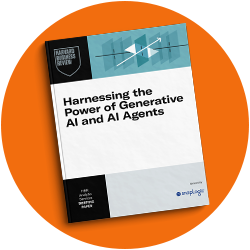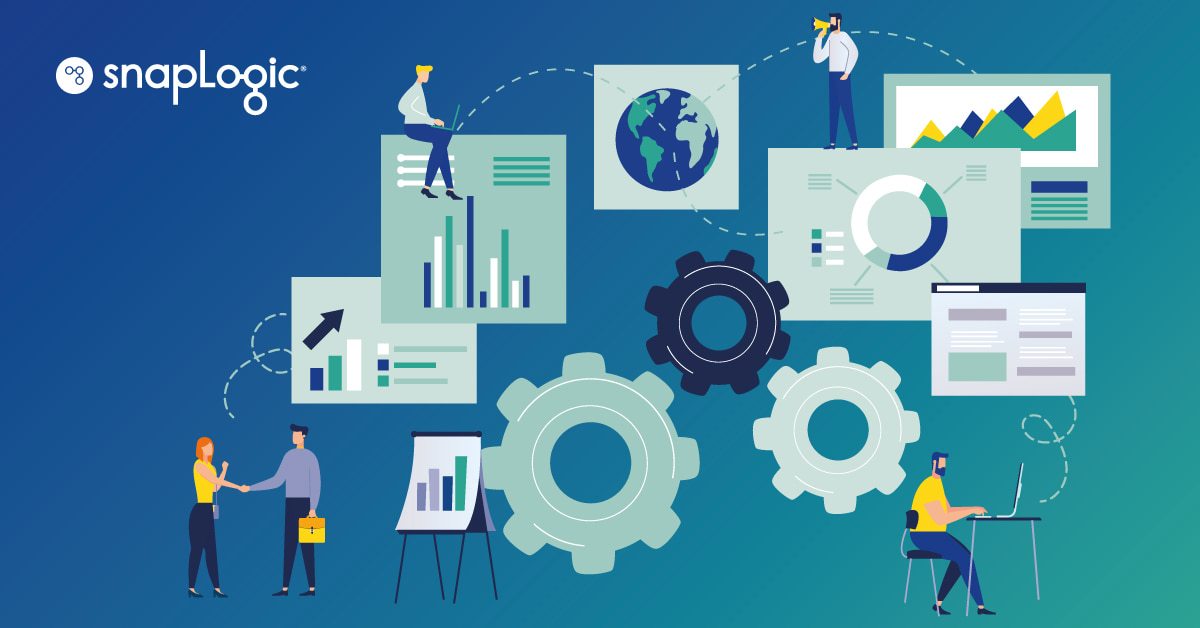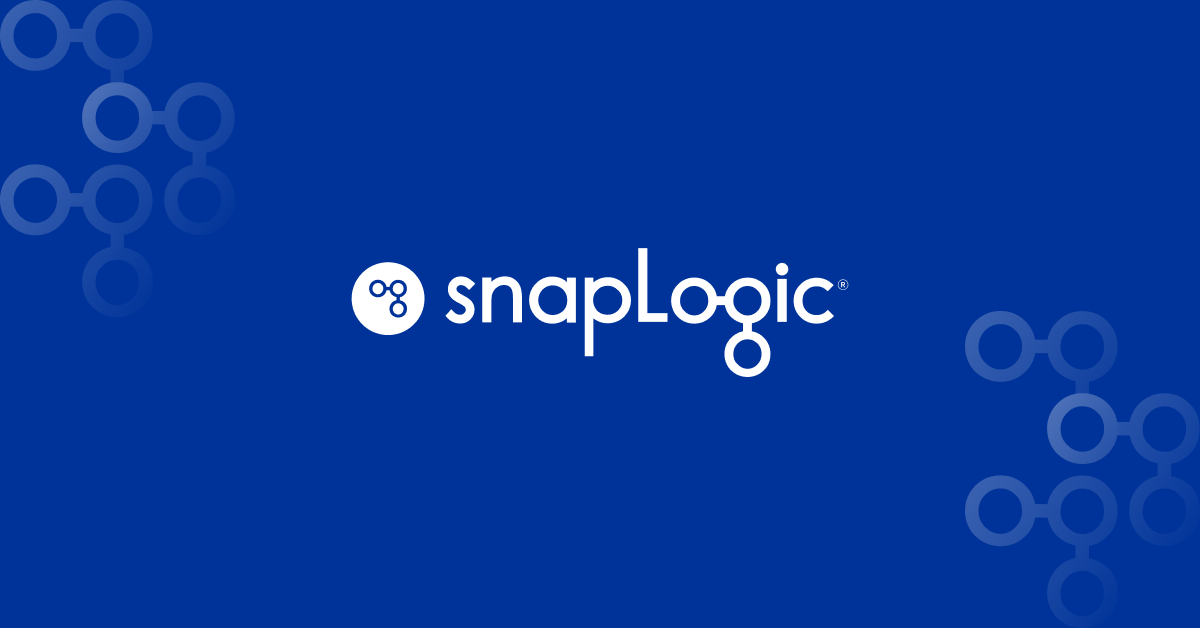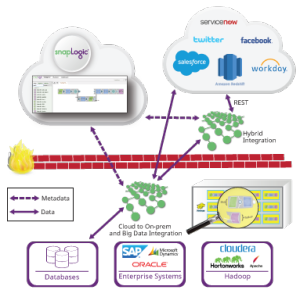 One of our goals at SnapLogic is to match data flow execution requirements with an appropriate execution platform. Different data platforms have different benefits. The goal of this post is to explain the nature of data flow pipelines and how to choose the appropriate data integration architecture. In addition to categorizing pipelines, I will explain our current supported execution targets and our planned support for Apache Spark.
One of our goals at SnapLogic is to match data flow execution requirements with an appropriate execution platform. Different data platforms have different benefits. The goal of this post is to explain the nature of data flow pipelines and how to choose the appropriate data integration architecture. In addition to categorizing pipelines, I will explain our current supported execution targets and our planned support for Apache Spark.
First, some preliminaries. All data processed by SnapLogic pipelines is handled natively in an internal JSON format. We call this document-oriented processing. Even flat, record-oriented data is converted into JSON for internal processing. This lets us handle both flat and hierarchical data seamlessly. Pipelines are constructed from Snaps. Each Snap encapsulates specific application or technology functionality. The Snaps are connected together to carry out a data flow process. Pipelines are constructed with our visual Designer. Some Snaps provide connectivity, such as connecting to databases or cloud applications. Some Snaps allow for data transformation such as filtering out documents, adding or removing fields or modifying fields. We also have Snaps that perform more complex operations such as sort, join and aggregate.
Given this setup, we can categorize pipelines into two types: streaming and accumulating. In a streaming pipeline, documents can flow independently. The processing of one document is not dependent on another document as they flow through the pipeline. Such streaming pipelines have low memory requirements because documents can exit the pipeline once they have reached the last Snap. In contrast, an accumulating pipeline requires that all documents from the input source must be collected before result documents can be emitted from a pipeline. Pipelines with sort, join and aggregate are accumulating pipelines. In some cases, a pipeline can be partially accumulating. Such accumulating pipelines can have high memory requirements depending on the number of documents coming in from an input source.
Now let’s turn to execution platforms. SnapLogic has an internal data processing platform called a Snaplex. Think of a Snaplex as a collection of processing nodes or containers that can execute SnapLogic pipelines. We have a few flavors of Snaplexes:
- A Cloudplex is a Snaplex that we host in the cloud and it can autoscale as pipeline load increases.
- A Groundplex is a fixed set of nodes that are installed on-premises or in a customer VPC. With a Groundplex, customers can do all of their data processing behind their firewall so that data does not leave their infrastructure.
We are also expanding our support for external data platforms. We have recently released our Hadooplex technology that allows SnapLogic customers to use Hadoop as an execution target for SnapLogic pipelines. A Hadooplex leverages YARN to schedule Snaplex containers on Hadoop nodes in order to execute pipelines. In this way, we can autoscale inside a Hadoop cluster. Recently we introduced SnapReduce 2.0, which enables a Hadooplex to translate SnapLogic pipelines into MapReduce jobs. A user builds a designated SnapReduce pipeline and specifies HDFS files and input and output. These pipelines are compiled to MapReduce jobs to execute on very large data sets that live in HDFS. (Check out the demonstration in our recent cloud and big data analytics webinar.)
Finally, as we announced last week as part of Cloudera’s real-time streaming announcement, we’ve begun work on our support for Spark as a target big data platform. A Sparkplex will be able to utilize SnapLogic’s extensive connectivity to bring data into and out of Spark RDDs (Resilient Distributed Datasets). In addition, similar to SnapReduce, we will allow users to compile SnapLogic pipelines into Spark codes so the pipelines can run as Spark jobs. We will support both streaming and batch Spark jobs. By including Spark in our data platform support, we will give our customers a comprehensive set of options for pipeline execution.
Choosing the right big data platform will depend on many factors: data size, latency requirements, connectivity and pipeline type (streaming versus accumulating). Here are some guidelines for choosing a particular big data integration platform:
Cloudplex
- Cloud-to-cloud data flow
- Streaming unlimited documents
- Accumulating pipelines in which accumulated data can fit into node memory
Groundplex
- Ground-to-ground, ground-to-cloud and cloud-to-ground data flow
- Streaming unlimited documents
- Accumulating pipelines in which accumulated data can fit into node memory
Hadooplex
- Ground-to-ground, ground-to-cloud and cloud-to-ground data flow
- Streaming unlimited documents
- Accumulating pipelines can operate on arbitrary data sizes via MapReduce
Sparkplex
- Ground-to-ground, ground-to-cloud and cloud-to-ground data flow
- Allow for Spark connectivity to all SnapLogic accounts
- Streaming unlimited documents
- Accumulating pipelines can operate on data sizes that can fit in Spark cluster memory
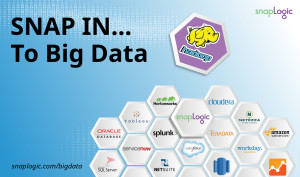 Note that recent work in the Spark community has increased support for out-of-core computations, such as sorting. This means that accumulating pipelines that are currently only suitable for MapReduce execution may be supported in Spark as out-of-core Spark support becomes more general. The Hadooplex and Sparkplex have added reliable execution benefits so that long-running pipelines are guaranteed to complete.
Note that recent work in the Spark community has increased support for out-of-core computations, such as sorting. This means that accumulating pipelines that are currently only suitable for MapReduce execution may be supported in Spark as out-of-core Spark support becomes more general. The Hadooplex and Sparkplex have added reliable execution benefits so that long-running pipelines are guaranteed to complete.
At SnapLogic, our goal is to allow customers to create and execute arbitrary data flow pipelines on the most appropriate data platform. In addition, we provide a simple and consistent graphical UI for developing pipelines which can then execute on any supported platform. Our platform agnostic approach decouples data processing specification from data processing execution. As your data volume increases or latency requirements change, the same pipeline can execute on larger data and at a faster rate just by changing the target data platform. Ultimately, SnapLogic allows you to adapt to your data requirements and doesn’t lock you into a specific big data platform.
